
SPACECRAFT
For countless years astronomers have dreamed of getting above the atmosphere, and indeed for some decades now it has been possible. The first method astronomers used to lift astronomical instruments above a large proportion of the atmosphere was by means of balloon filled with hydrogen or helium gas. Helium is used most commonly as hydrogen forms an inflammable mixture with oxygen since this gasses are much lighter than air (less dense), it follows that balloon so filled will tend to rise above the dense lower part of the atmosphere until they reach a level where the density of the air is much the same as that of the gas in the balloon. Thus small quantity of equipment can be raised to height of over 20 miles. But this is hardly space flight.

image source:(http://google.com)launching a high altitude balloon
In the second century AD the Greek writer Lucian one of the earliest science fiction stories, in which a ship of men was picked up by a waterspout and hurdled up to the moon. Many other fiction stories followed, including one in which the hero was towed to the moon by a flock of wild swans. A rather better idea was suggested by the famous French author Jules Vern in his book from the earth to the moon. His idea was to fire a large shell containing his space travellers from an enormous gun with a speed of 7 miles per second, sufficient to take it to the moon. Unfortunately such a shell would probably be destroyed by atmospheric friction and in any case the shock of such sudden acceleration would certainly kill the crew members.
Nevertheless Verne was correct in one respect: a projectile given a velocity of 7 miles per second could certainly reach the moon if it were aimed correctly. This speed is the earth's escape velocity. If you throw a stone upwards, it will reach a certain height and then fall back. If, however, you could find a means to throw the stone at the escape velocity it would completely overcome the earth's gravitational pull and continue to travel outwards forever.
ROCKETS
aircrafts would be useless in space for 2 reasons. Firstly their wings require air to provide lift to keep them flying and secondly propellers requires air to work to provide forward thrust. Even the jet engine requires a plentiful supply of air and there is of course no air in space. Thus travel to the planets requires a totally different method of propulsion - the rocket.
All rockets, from fire work up to interplanetary crafts, utilize what newton termed the principle of reaction. This principle is easily illustrated by means of a balloon. When a balloon is fully inflated and the end sealed, there is am equal pressure of gas at every point within it. If the nozzle is now opened, gas will escape rapidly through the nozzle and the balloon will shoot up in the opposite direction.
A balloon so released does not get very far it soon uses up all the gas it contained and it's slow down by friction with the atmosphere. The rocket motor carries its fuel with it, and this is burned inside the motor to produce hot gasses at a controlled rate. The expanding gasses provide the thrust that propels the rocket. Many smaller rockets (including fireworks) use solid fuel packed into the motor, but most larger ones use liquid fuels pumped from tanks into the motor at a suitable rate.
R.H. Goddard published a book showing the possibility of rocket propulsion, including the idea of firing one to the moon. In 1926 he fired the first liquid fuelled rocket which using a mixture of petrol and liquid oxygen, reached a height of about 200ft. Another great pioneer was oberth, whose publications led to a great interest in rocketry in Germany. During the second world war the v2 rocket was perfected which could attain a height of 100 miles and which was used to drop explosives in London in 1944. After the world war, v2 rockets were used to explore the upper atmosphere and some of the inaccessible parts of the electromagnetic spectrum.
The v2 is regarded as the forerunner of modern spacecraft.
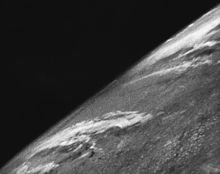
image source(http://google.com)The first photo from space was taken by a v2 rocket
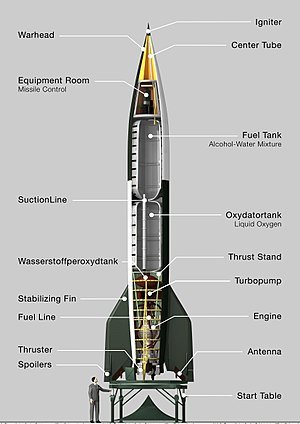
image source:(http://google.com)section of a v2 rocket*
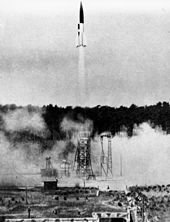
image source
first launch of a v2 rocket
Improvement were rapid and a great deal of research was done with such rockets as the step rocket, which consists of 2 or more rockets placed on top of each other. When the bottom rockets or first stage has used up all its fuel, it drops off, leaving the second and subsequent stages to fire in succession, each starting off with the benefit of the previous stage's velocity. In this way large amount of useless weight is ejected, and the final stage can be made to reach the desired speed with its payload of scientific equipment. The first such rocket was fired in 1949, and consisted of a small rocket, the WAC corporal, placed on top of a v2. The final altitude attained was 250 miles.
Once a spacecraft has been launched by a step rocket, it is seldom found to be on its precise planned course, simply because so many factors can produce minute deviation from the computed orbit.
Thus space probes are fitted with small controlled jets, little rocket motors with sufficient fuel to make at least one major change in course during the flight. These controlling devices are operated from the earth by radio.
MANNED SPACE EXPLORATION
What arouses popular interest in the exploration of the planets is certainly the prospect of manned voyages through space. The first living creature to be sent into space in a satellite was the dog laika in the Russian sputnik 2 of November 1957.
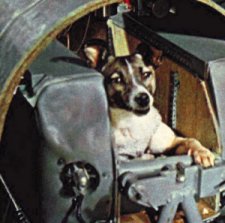
image source
laika practicing for liftoff
Before a manned flight can be attempted it was essential to find out what effect space travel might have on living creatures. Would the level of radiation, for example, be harmful to man? When a satellite move in an orbit round the earth, the occupants experience weightlessness since the gravitational attraction of the earth is balanced out by the motion of the satellite. What sort of effect might this have? It was for reasons such as this that the dog laika and later animals were sent into orbit. Unfortunately laika never returned to earth.
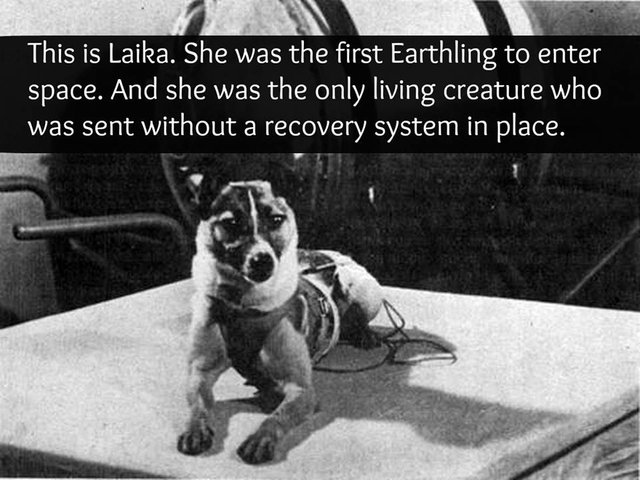
image source(http://google.com)
In the intervening years several unmanned spacecraft were sent into orbit and then brought back to earth.
FIRST MAN IN SPACE
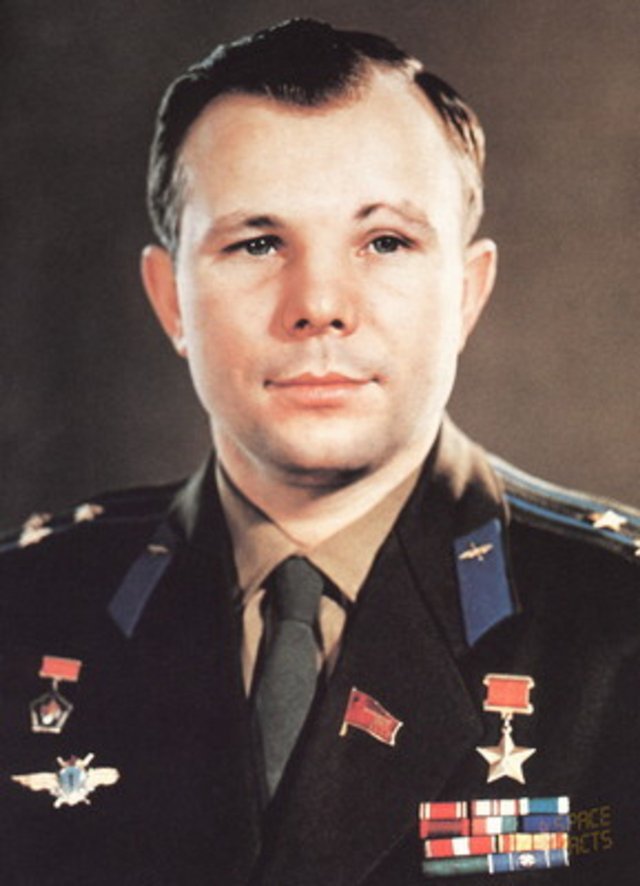
image source(http://google.com)yuri gagarin first man in space
On 12 April 1961, the Russian major Yuri Gagarin became the first man in space in his 4¾ ton spacecraft Vostok 1 he made a single orbit of the earth at height ranging from 112 to 203 miles.
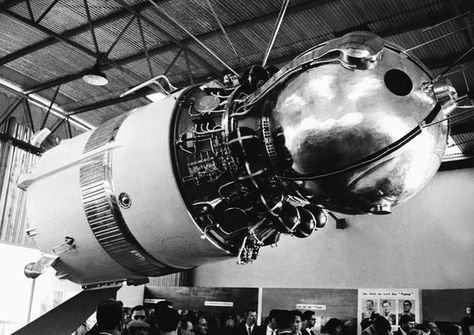
image source(http://google.com)vostok 2
in a period of 1 hour 48 minutes and returned safely to a prearranged spot in the soviet union
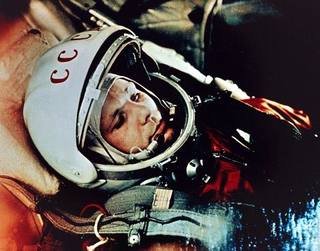
image source(http://google.com)gagarin in spacecraft
By his flight he had shown that man could definitely withstand the accelerations involved, weightlessness, radiation and all the other postulated hazards, at least for short periods, and he was acclaimed throughout the world.
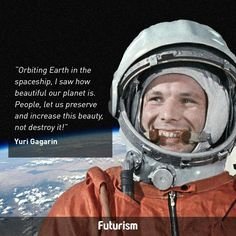
Tragically he was killed in a plane crash in 1968. On 5 may 1961 commander Allan shepard became the first American in space with a 15 minutes up and down flight to a height of 120 miles.

image source(http://google.com)alan shepard
The next flight in the Vostok series was more ambitious major Titov in Vostok 2 made seventeen and a half complete orbit on 8 and 9 august 1961, returning without any ill effects.
image source(http://google.com)major titov
The American manned programme came under the title of project mercury and their first orbital flight was made in February 1962 by colonel John Glenn, who in his craft friendship 7 made 3 orbits.
Now, only a few years later, manned orbital flights are almost commonplace. Man has landed on the moon and contemplates flight to mars.
note: a lot of research was done in writing this article, which includes Google search and some astronomical textbooks I was able to gather and used them as references
Thanks for reading please upvote and resteem.
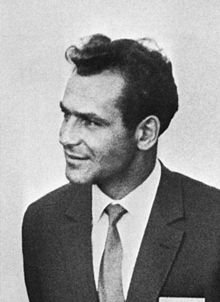
helllo
your article qualifies you to use the science and steemstem tags
pls edit your tags and use these
steemstem
and science
Downvoting a post can decrease pending rewards and make it less visible. Common reasons:
Submit
Ok thank u
Downvoting a post can decrease pending rewards and make it less visible. Common reasons:
Submit
Congratulations @hemsey! You received a personal award!
You can view your badges on your Steem Board and compare to others on the Steem Ranking
Downvoting a post can decrease pending rewards and make it less visible. Common reasons:
Submit